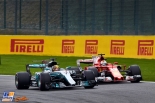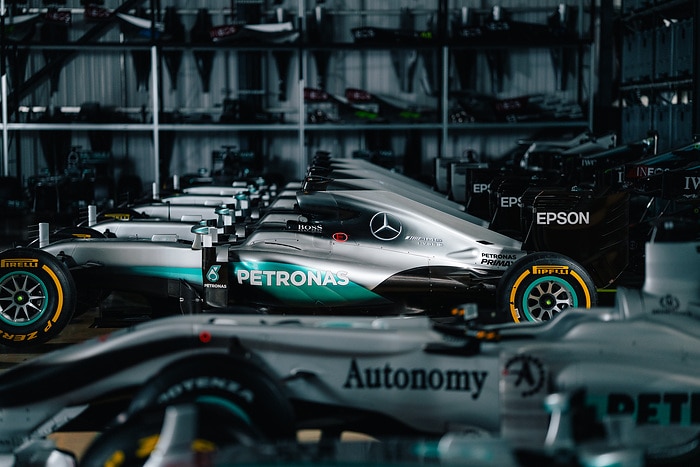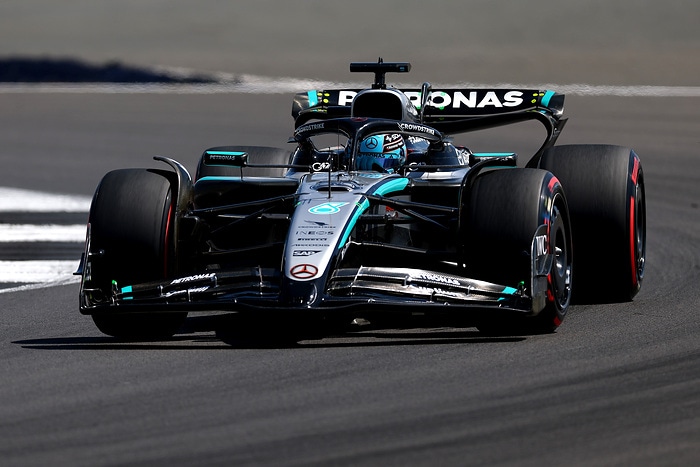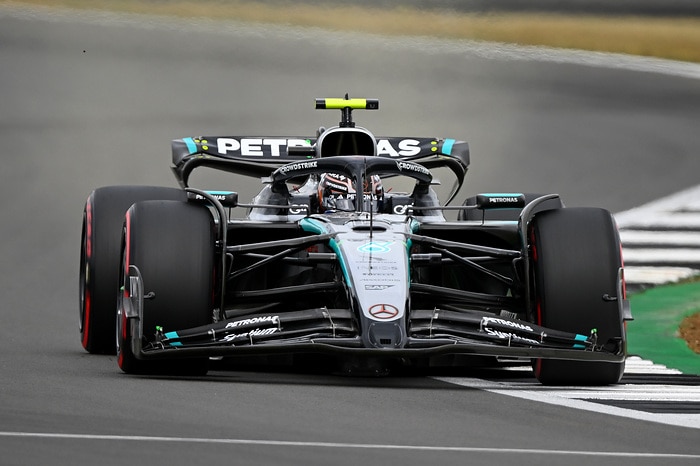
9:02 – Oil burning has been a key talking point through the 2017 season, heightened by the FIA’s recent clampdown. GPUpdate.net technical expert Craig Scarborough provides an in-depth analysis of the situation.
An ongoing story this year has been the power unit situation between Mercedes and Ferrari. For the past two seasons, the balance of power has been close between the pair, with Mercedes having the slightly more powerful engine, especially in qualifying mode. A factor in the difference between the two motors is believed to be how they use oil to aid combustion. The FIA stepped in during the winter to outlaw this practice, but even by the 13th race of the year this is still a performance differentiator between the two teams.
Any internal combustion engine, and especially race engines, burn oil. This is a simple fact of using oil to lubricate the cylinder walls and needing to vent oil mist from within the crankcases. Thus for decades engines have used oil through the race and vented the crankcases through a breather out the back of the car. Oil consumption was a problem and efforts have always been made to prevent excessive oil loss, as this effects weight and engine performance, not least to prevent blue smoke emerging from the exhausts. Consequently, purposely burning oil was not a benefit to the performance of the car.
Current F1 engines, with the restriction on fuel flow and formulation, struggle to perform as the combustion process doesn’t have the fuel and additives to create a powerful and reliable power stroke. Pushing this too hard creates ‘knock’, where the fuel mix ignites spontaneously inside the engine, losing power and causing unreliability. If you could put in more additives then knock can be reduced and the engine pushed harder to create power.
It appears that Mercedes found out quite early that allowing oil to pass into the combustion process could be a way to introduce additives not allowed into the fuel to improve performance. As the oil rules are different to that of fuel, oil could carry additives that otherwise couldn’t be used in the engine. The rules do not allow oil to purposely introduced into the combustion process, so a roundabout way had to be used to get this to work.

Luckily the venting of the crankcases allows a controlled path to get oil into the combustion. Inside the crankcases oil is used to lubricate the crankshaft and oil sprays are used to cool the underside of the pistons; all of this oil is thrashed about by the high revving engine creating an oil mist. Teams also like to run a partial vacuum inside the crankcase to reduce power loss from moving air around inside. This oil-air mix can be vented and the rules demand this must be passed into the engine airbox, so as not to spray the track with oil mist.
What’s more, the vent from the crankcase into the airbox is allowed to have a solenoid valve to manage the crankcase pressure. With this set-up the engine developer can create an engine map where the solenoid opens to allow more oil mist to pass from the crankcase into the airbox, thus allowing the additives in the oil to pass into the cylinders with the fuel and air to create a more powerful/knock resistant mix. This special engine map can be used whenever the drivers needs full power, either in qualifying or tactically during the race. Obviously, the map cannot be used constantly due to excessive oil consumption and the added stress on the engine.
It is believed that this process has been has been used since the inception of the current engine formula back in 2014, by Mercedes, while Ferrari was late to catch up to the practice, which has accentuated its struggles compared to Mercedes during Q3, when the more powerful engine mapping can be deployed, giving some two to three tenths per lap, so estimations make the mapping worth some 20-30hp.

The initial five-litre race oil consumption limit was not effective, as the practice was most useful for short periods in the race and qualifying. A subsequent oil consumption rate was introduced of 1.2 litres per 100 kilometers, bringing the race oil consumption down and more importantly reducing the amount of oil that can be used in qualifying. Yet still the consumption rate was not that effective at nullifying the qualifying map.
It is understood that Ferrari, unable to make the oil burning work with the simpler set-up, exploited a second oil tank with a different oil formulation and used this tactically to gain power at key moments of the race weekend. This additional oil tank and its contents were looked at by the FIA, and a technical directive outlawed the two-oil formulation approach, costing Ferrari some of its tactical power tricks.
Moving on from the secondary oil tank clarification, further directives issued by Charlie Whiting set out a stepped reduction in instantaneous oil consumption over the rest of the season and into 2018. The 1.2 litre per 100km limit remained in place, while new engine specifications introduced from Monza onwards would be subject to a reduction to 0.9 litres per 100km, before reducing to just 0.6 litres per 100km for 2018.

This directive was at first seen as a blanket limit for engines from Monza onwards, but the critical wording was ‘engine specification’, thus if a new engine specification could be introduced before Monza then that spec engine could compete at the full 1.2 litre rate. Mercedes was able to push for a new V6 engine specification to be brought to Spa, earlier than anticipated by the media and its competitors. In doing this Mercedes was able to beat the new limit, although the team has added that the engine can meet the 0.9 litres consumption rate, but no doubt can also benefit from the higher rate.
So, while Mercedes has the potential edge with the higher power mapping, Ferrari missed the Monza deadline, meaning its new specification V6 will have to be introduced with a lower specific oil consumption. The other engine manufacturers, Renault and Honda, are believed to not be so reliant on oil burning for their performance, so the reduction in oil consumption will not affect them as much as Ferrari, and to a lesser extent Mercedes, in 2017.
As of Spa, Mercedes has used its allocation of four engines for the season, leaving it to run the remaining eight races with apparently no more new engines, unless a grid penalty is taken for the fifth unit. Mercedes appears to be comfortable with the pool of used engines, all specified at the higher oil rate, so it could race an older low mileage engine at races later in the year. If it introduces a new specification V6 engine, then it will have to be at the lower oil rate, but this is not thought a likely scenario.

Ferrari, meanwhile, has yet to introduce its fourth and final V6 engine into its pool. This was widely anticipated to have been run at Monza, but Ferrari did not appear with a new engine, instead using the third unit from its pool, which had also been raced at Spa. This new specification will have to run at the lower oil burn rate, but is also speculated to be a big step in its internal design. There have been rumours that a new 3D printed piston will make its debut with the new spec, but perhaps more importantly the piston will be made of steel rather than aluminium. However, as the 3D printed piston has been rumoured since pre-season, it is questionable if this is actually going to be the case. Neither the engine nor 3D printing industry have reported such developments being run in test engines and if this piston were to appear in the next-spec Ferrari V6, then this will truly be a pioneering piece of technology.
So, while Ferrari has lost some potential performance in oil burning, they have less races in which to run a fourth engine. With Singapore being the next race and a venue notably low on engine demands, the Malaysian race might be a better venue for a new more powerful V6 engine to be introduced. This would give Ferrari five races in which to run the engine, well within in its life expectancy, though both drivers are already onto their fourth Turbocharger, bringing them perilously close to a grid penalty. Therefore across the remaining events there is a finely balanced situation between Mercedes and Ferrari with regards to engine performance, life and penalties.
Stay tuned to GPUpdate.net for more technical insight from Craig Scarborough through 2017
Source :http://feeds.gpupdate.net






















